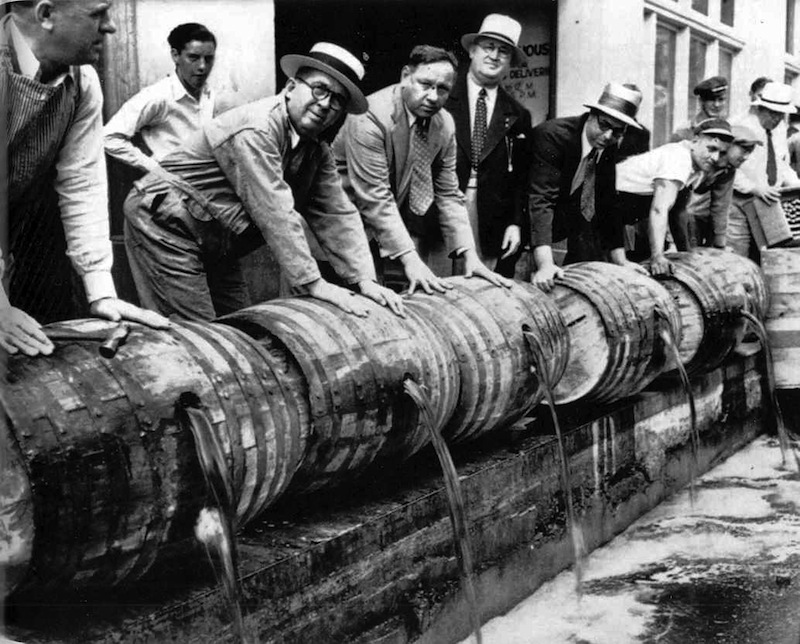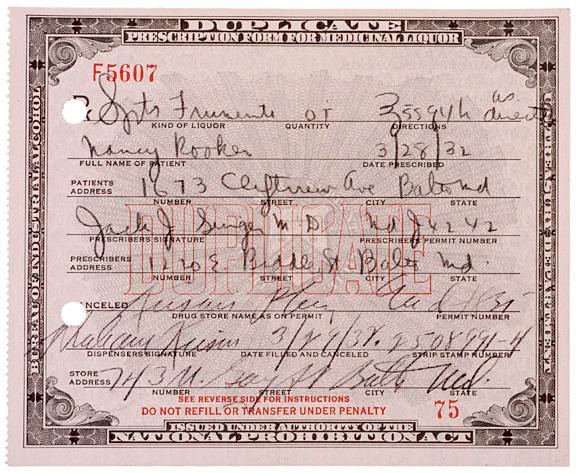In 1917, the United States Congress passed Amendment XVIII to the Constitution prohibiting the sale, importation, exportation, manufacture and transportation of alcoholic beverages. Although Congress had stipulated a seven-year deadline for ratification by the states, by January 1919, just 11 months later, the amendment had received the necessary three-quarters support. In October 1919, the National Prohibition Act (also called the Volstead Act, after Andrew Volstead) or Prohibition Act was finally passed.
"The demon of drink makes a will. An era of clear thinking and clean manners is dawning. Slums will soon be a thing of the past. Prisons will be emptied and transformed into barns and factories. All men will walk tall again, all women will smile and all children will laugh. The gates of hell will be closed for ever.
In the United States there had been a so-called Temperance Movement since the 19th century , which gradually became more radical in its discourse until it called for the total prohibition of alcohol. This movement was joined by various religious leaders from Protestant churches who blamed alcohol for the ills of society. In addition, many factory owners supported prohibition in their desire to prevent accidents and increase the efficiency of their workers at a time of increased industrial production.
During Prohibition, doctors were allowed to prescribe alcohol as a solution for certain ailments. In the 14 years of Prohibition, an estimated 6 million prescriptions for alcohol were issued. Here is one of them
Despite the apparent initial success, the typical postcards of 1920s America were smuggled alcohol from Canada, home brewing, speakeasies, the mafia... and the ruin of many wineries.
By the beginning of the 20th century, California had built up a large wine industry and California wines were beginning to win prestigious international competitions. It is estimated that before Prohibition there were more than 2,500 commercial wineries; when Prohibition was lifted in 1933 there were barely a hundred left. How did they manage to survive Prohibition? Thanks to the Catholic Church.
Title III, Section 3 of the Volstead Act stated....
"Liquor for medicinal purposes and wine for sacramental purposes may be manufactured, bought, sold, transported, imported, exported...".
So what these wineries did was to sign agreements with the Church and become suppliers of wine for the celebration of mass. Of course, either the number of masses celebrated during this period increased dramatically or part of this wine was "diverted" for other, less sacramental purposes, because the amount of wine controlled by the Church went from 2,139,000 gallons -one gallon equals 3.7 litres- in 1922 to 2,944,700 gallons in 1924. A brutal increase... at a time of prohibition.


















1 comment